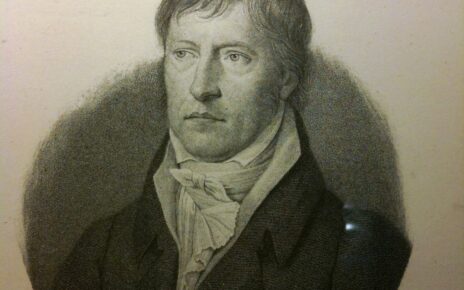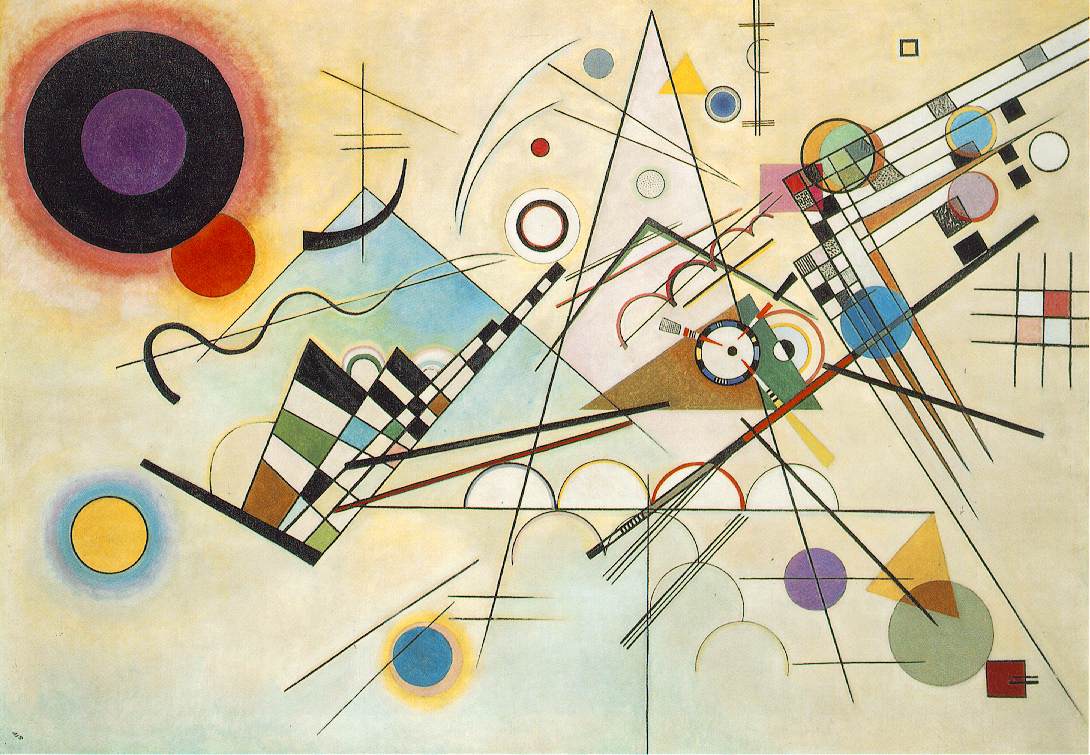The following is the second part in a two-part installment. The first part can be found here.
II. “Absolute Symbolism” of Christian Worldview: The Aesthetic Dimension
The term “absolute symbolism” was introduced into Russian religious philosophy by Alexei Losev to describe the overall quality of Christian aesthetic consciousness. Losev distinguished between three major types of worldview and systems of thought in the history of European spirituality: 1) “absolute apophatism”; 2) “religious rationalism” and 3) “absolute symbolism.”
“Absolute apophatism” denies the possibility that the divine may be revealed in the world in any way, and asserts total incomprehensibility of God in His absolute transcendence; the apogee of this trend of thought in history was, according to Losev, Kant’s transcendental idealism that proclaimed a gap between the phenomenon and the Ding an Sich, absolute autonomy of the phenomena and the noumena, complete impossibility to penetrate into the essence of things.
“Religious rationalism” (not necessarily in the Cartesian tradition of understanding ratio) is viewed by Losev as a system of thought and belief asserting, on the contrary, total comprehensibility of God as substance, full and complete revelation of the Divine in the phenomena of the world, and therefore the possibility of full and complete cognition of God by human intellect in the things of the world; this was equally typical of neoplatonic pantheistic systems and of most heresies within Christianity rejecting the heavenly, the transcendent, the mystical in favour of the worldly, the immanent, the rational.
Finally, “absolute symbolism” as the only truly Christian worldview is what lies between these two extremes; it is only “absolute symbolism” that Christian consciousness can accept as a standpoint opposing both “apophatic” and “rationalistic” heresies. “Absolute symbolism” implies that God reveals Himself in the world through His energies, that He is energetically present in the earthly reality with all His infinite properties, at the same time fully retaining His substantial transcendence[1].
 Therefore, the things of the world are seen symbolically, i.e. as entities through which we come to meet a different world, that of eternity, that of God’s glory, which is the only power sustaining creation and constituting the ultimate reality of things. Symbol, thus, is understood (basically in accordance with its etymology – suìballw) as an energetic being, as a space where two energies, two wills, two intentions meet: that of God and that of man; at the same time, symbol is always something empirically given, it is a concrete phenomenon of the world, physically embodied and sensually perceptible.
Therefore, the things of the world are seen symbolically, i.e. as entities through which we come to meet a different world, that of eternity, that of God’s glory, which is the only power sustaining creation and constituting the ultimate reality of things. Symbol, thus, is understood (basically in accordance with its etymology – suìballw) as an energetic being, as a space where two energies, two wills, two intentions meet: that of God and that of man; at the same time, symbol is always something empirically given, it is a concrete phenomenon of the world, physically embodied and sensually perceptible.
Obviously, such an approach results from iconological thinking, since the above-given definition of symbol (though rather vague) is what actually elucidates the ontology of Icon as an image containing real Divine glory and grace. It is also quite clear, I think, that – in the epistemological dimension – symbol, according to the given understanding, functions as an overall characteristic of a particular type of structures present in the human mind, or consciousness, which symbolic images, or icons, belong to, along with some other possible aesthetic entities such as, for example, word and myth.
By saying this, I do not suggest that symbolic structures should be viewed as cognitive faculties of the mind; rather, they could be seen as constitutive elements of being as referred to the human existence in the created world, or elements of the “texture of the world” (to use Ilyin’s expression) as realized by the mind. This understanding is actually the basis of Losev’s provocative definition of aesthetic form (which, for him, is the synonym of artistic expression): it is such a form, or expression, which conveys the subject-meaning with absolute adequacy, so that the expression fully contains that which is being expressed, and there is no need in deducing the subject-meaning out of the expression with the help of any logical procedures outside the form[2]; i.e. aesthetic form is a symbolic expression that can only be perceived symbolically, or alogically, in the sense that it is given first of all to live in, not to reflect on.
There is a definition of symbol that became famous in Russian philosophy due to its concise, yet comprehensive wording; it was introduced by Fr. Pavel Florensky and first used by him to articulate the ontology of language (particularly, that of the name) in his Thought and Language. The definition runs as follows: “symbol is a being that is bigger than itself,” “something revealing that which is different from it, yet which is essentially present in it (or is being manifested through it)”[3]. As it has been observed by some authors, this definition is very close to the understanding of existence in Western phenomenology, particularly in Heidegger (although developed absolutely independently).
What I would like to point out here is that Florensky’s understanding of symbol 1) serves as clarifying the existential implications of iconological thinking introduced in the beginning of this essay: image/icon as a symbol is by no means a mere “construction,” or “product” of whatever or whoever, but a type of being, or, rather, a form, through which being speaks unto man; and 2) provides an adequate viewpoint on ontological links between the realities of language, art and personality, with respect to the ontological paradigm of God’s revelation in His relationship to the world: that is to say, symbolic understanding may equally be applied to images in literature, painting or music, to the phenomena of language, particularly to the word (which is a separate, very wide and fascinating topic in Russian religious philosophy) and to human personality as well as to God’s personality in order to highlight the extent and specific character of the Divine presence, or revelation, in each particular case, i.e. the “ontological picture” of a particular sphere of reality.
At this point, I shall make, perhaps, a slightly unexpected twist from the ontology of image to that of creative process, and look at the concept of contemplation in Ivan Ilyin’s aesthetics. It will be done to elucidate some of what has so far been said, for contemplation in Ilyin seems to be closely connected with the framework being outlined here; so, the following is, as it were, the final variation on the introduced theme.
 III. Aesthetics of Contemplation: The Existential Dimension
III. Aesthetics of Contemplation: The Existential Dimension
Contemplation is quite a widely used term, both in philosophy and theology. Because of this wide range of usage, however, it may often appear to be ambiguous or misleading, particularly taking into account its somewhat solemn and elevated connotations. Yet, polisemy must not prevent us from understanding the core meaning of contemplation as one of the basic notions of Christian thought, which borrowed the original term (qeoria) from Greek philosophy.
The most common way to define contemplation is to describe it as a method of cognition, i.e. a process, an act of perception which is based on intuition, rather than logic, and which is often characterized as mystical comprehension as opposed to rational analysis. However, such epistemological definition turns out to be of little help when one comes to consider the ways in which this term was used by some Eastern Fathers as well as by a number of Russian religious philosophers. I would rather prefer to emphasize the existential dimension of contemplation that, in fact, acquired high relevance in the late Antiquity, particularly in Plotinus, to be developed and modified later on in the Fathers.
By the existential dimension of contemplation, I simply mean that it is not actually an intuitive faculty or method used by man, but, first of all, the fundamental principle of any intuitive act, i.e. a state or special form of man’s existence that becomes an appropriate condition for various kinds of mystical or “irrational” comprehension. Indeed, the well-known Plotinus’s understanding of contemplation as the principle of Life, as the ultimate goal of existence, as attaining unity with the One, shared by other neoplatonic authors, was transformed by many Fathers at different periods of Byzantine theological thought into a concept denoting one of the highest levels of spiritual experience, when man is able to see the truth of God, His Divine glory, light and beauty in things and beyond things, the level which is described as either close to or coinciding with the state of transformation of personality. Although the terminology of the Fathers may actually vary quite substantially, there is always the core of thought that remains unchangeable and irreducible to anything outside itself: contemplation is conceived as a state of reality that, once attained, provides for the insights into the essential, into being.
It is, therefore, very important to notice that in Russian religious philosophy, particularly in that of the 20th century, the use of the term “contemplation” quite often makes one think of the existential dimension roughly sketched above. There is, however, at least one vivid example of an explicitly articulated understanding of contemplation that can be attributed to the tradition of “absolute symbolism”, and that is Ivan Ilyin’s “contemplation of the heart.”
As I mentioned in the first part of the paper, Ilyin sees aesthetic reality iconologically, as revealing the substance through the image. The comprehension of this substance being revealed requires on the part of the artist, as well as on the part of the one who perceives a work of art, a certain state of “openness” to what is being conveyed, a kind of “intentional” involvement in what is being spoken unto him; this particular state is described by Ilyin as “creative contemplation,” or “contemplation of the heart.” Following the tradition of understanding the heart as a “mystical organ,” the central and deepest point in personality sacramentally connected with the Divine (which is, by the way, a clear example of an iconological paradigm in anthropology shared by Florensky, Boris Visheslavtsev and others), Ilyin discerns the activity of the heart from other man’s properties such as intellect, will, desire, imagination etc., and by doing this discerns contemplation as something found in the heart from all possible cognitive and creative acts, which are discrete as such in time and space, whereas contemplation implies wholeness of being, comprehension and creativity[4].
In other words, contemplation is the very life of the heart that, once realized and, as it were, released from the constraints of passions, comes to fill the whole personality transforming all psychological properties into spiritual ones. Contemplation is viewed as a state of reality and mind in which the “vertical” paradigm in the poetic form and in creativity is truly and most fully revealed. It is in contemplation that it becomes possible for man to truly partake of being; it is in contemplation that he finds himself enlightened by the glory of God to perceive “the texture of the world” as reflecting the actual state of things in relation to the Divine; finally, it is in contemplation that man can truly create, i.e. not really imagine something new, but form images of what he has seen as if in “inverse perspective”, from contemplation, from the state of personal communion with the energies of God.
It should be pointed out that the “contemplation of the heart” in Ilyin’s works does not refer only to the sphere of artistic creativity, is not confined just to “poetic contemplation.” It is, almost as in Plotinus, the principle aim to be sought by man in all areas of his life, be it inner or social life: prayer and family, love and pedagogy, thought and politics; in all these spheres man can discover the ways for creative activity from the heart, once he is in contemplation, which is achieved in personal spiritual experience, through constant care of Christian virtues and worship[5].
 As for the aesthetic implications of contemplation in Ilyin, I would underline that it is quite a significant example of introducing the mystical dimension, originally present in Christian tradition, into a non-mystical discourse in such a way that it appeals not to any intellectual schemes, but to the ultimate depths of human heart; it is a discourse of the heart addressed to the heart at the deepest ontological level, which can hardly be and does not need to be reformulated. In his critical studies Ilyin gave numerous examples showing how his theory of contemplation as well as his conception of the aesthetic form can be applied to the interpretation of literary works by determining and classifying various “types” of poetic contemplation. For instance, in his work On Darkness and Enlightenment, which remains an unsurpassed illustrative document in Russian aesthetics and literary criticism, he deals with three outstanding Russian writers of the 20th century – Ivan Bunin, Alexei Remizov and Ivan Shmelev – whose prose receives a detailed hermeneutical analysis highlighting the nature and, as it were, the structure of their contemplation.
As for the aesthetic implications of contemplation in Ilyin, I would underline that it is quite a significant example of introducing the mystical dimension, originally present in Christian tradition, into a non-mystical discourse in such a way that it appeals not to any intellectual schemes, but to the ultimate depths of human heart; it is a discourse of the heart addressed to the heart at the deepest ontological level, which can hardly be and does not need to be reformulated. In his critical studies Ilyin gave numerous examples showing how his theory of contemplation as well as his conception of the aesthetic form can be applied to the interpretation of literary works by determining and classifying various “types” of poetic contemplation. For instance, in his work On Darkness and Enlightenment, which remains an unsurpassed illustrative document in Russian aesthetics and literary criticism, he deals with three outstanding Russian writers of the 20th century – Ivan Bunin, Alexei Remizov and Ivan Shmelev – whose prose receives a detailed hermeneutical analysis highlighting the nature and, as it were, the structure of their contemplation.
Ilyin distinguishes between the “levels” of the “poetic objects” or “existential states” of reality contemplated by each writer and demonstrates how these “objective circumstances” are expressed in the sphere of poetic images and manifested in the “aesthetic matter”, i.e. the language, or style, of the authors. Bunin’s “creative act,” according to Ilyin, is characterized by a “deep” contemplation of the “lowest” existential states in man and nature, when the heart of the writer abides in the realm of “generic, sexual instinct,” in the realm of passionate, sensual life; this ontological sphere of existence is naturally reflected in predominantly sensual imagery which, in its turn, shapes Bunin’s famous descriptive style, elaborately picturesque, vivid yet essentially subjective, and his penetratingly emotional narration[6]. In Remizov, Ilyin finds a “creative act” of a_ ____ , a holy fool, a contemplation of the heart which sees and experiences darkness, suffering and spiritual bereavement in the human soul and in the world, and embodies this experience in phantasmagoric images, “whirling fancies” conveyed through a most unconventional, impulsive, uncontrolled and intentionally provocative manner of writing[7].
Finally, Shmelev’s contemplation, particularly in the works based on religious tradition such as The Lord’s Year, The Inexhaustible Bowl, The Ways of Heaven, is regarded by Ilyin as partaking of the “highest” existential states observed in man and God; the heart of the writer contemplates sacredness, sacrifice, purifying suffering and the revelation of the Divine image in the human nature[8]. Shmelev’s imagery is, therefore, considered as substantially spiritual, non-sensual, transcending experiences of purely psychological character and penetrating into the most intimate layers of personality where human divinity is realized through love, mercy and faith. Hence Shmelev’s warm-hearted, cordial style, his forgiving attitude towards his characters, his tender and loving descriptions, the spiritual “music” of his prose celebrating joyful light and reconciliation of warring worldly passions.
The way in which Ilyin views artistic activity may in fact open a new and broad perspective for the analysis of creative process on the basis of symbolic understanding of art, language and personality. Not only does it evoke the question of possible types (degrees, levels) of contemplation, since it is always a deeply personal and essentially religious experience, but also raises the problem of correlation between the contemplation of the artist and that of the spectator, listener or reader, i.e. the question of methodology of approaching, describing and interpreting creative acts with respect to poetic contemplation, etc. This may be done by way of elaborating a comprehensive theoretical discourse, modifying and incorporating certain principles suggested by the religious thinkers whose ideas have formed the ground for the present reflective outline.
Oleg Komkov – PhD (Comparative Culture), is Associate Professor at the Department of Comparative Literature and Culture, Faculty of Foreign Languages and Area Studies, Lomonosov Moscow State University. The author of over 50 articles and several books (mostly in Russian), he specializes in cultural theory, philosophical hermeneutics and theological anthropology, with interests in Byzantine iconology and the religious themes in Western and Russian literature and criticism.
[1] See: Losev, Alexei. Op. cit. P. 230-235.
[2] See: Лосев А.Ф. Форма – Стиль – Выражение. М., 1995. С. 45 (Losev, Alexei. Form – Style – Expression. Moscow, 1995. P. 45).
[3] Флоренский П.А. Мысль и язык // Флоренский П.А. Сочинения. В 4 т. Т. 3 (1). С. 257 (Florensky, Pavel. Thought and Language. In: Florensky, Pavel. Selected Works (in 4 volumes). Vol. 3 (1). P. 257).
[4] See: Ильин И.А. Путь к очевидности // Ильин И.А. Собрание сочинений: В 10 т. М., 1994-1999. Т.3. С. 538-544 (Ilyin, Ivan. The Way to Evidence. In: Ilyin, Ivan. Selected Works (in 10 volumes). Moscow, 1994-1999. Vol. 3. P. 538-544).
[5] Ibid.
[6] See: Ильин И.А. О тьме и просветлении. Книга художественной критики. Бунин – Ремизов – Шмелев // Ильин И.А. Собрание сочинений: В 10 т. М., 1994-1999. Т.6. Кн. 1. С. 210-270 (Ilyin, Ivan. On Darkness and Enlightenment. A Book of Literary Criticism. Bunin – Remizov – Shmelev. In: Ilyin, Ivan. Selected Works (in 10 volumes). Moscow, 1994-1999. Vol. 6. Book 1. P. 210-270).
[7] Ibid. P. 271-333.
[8] Ibid. P. 333-406.




